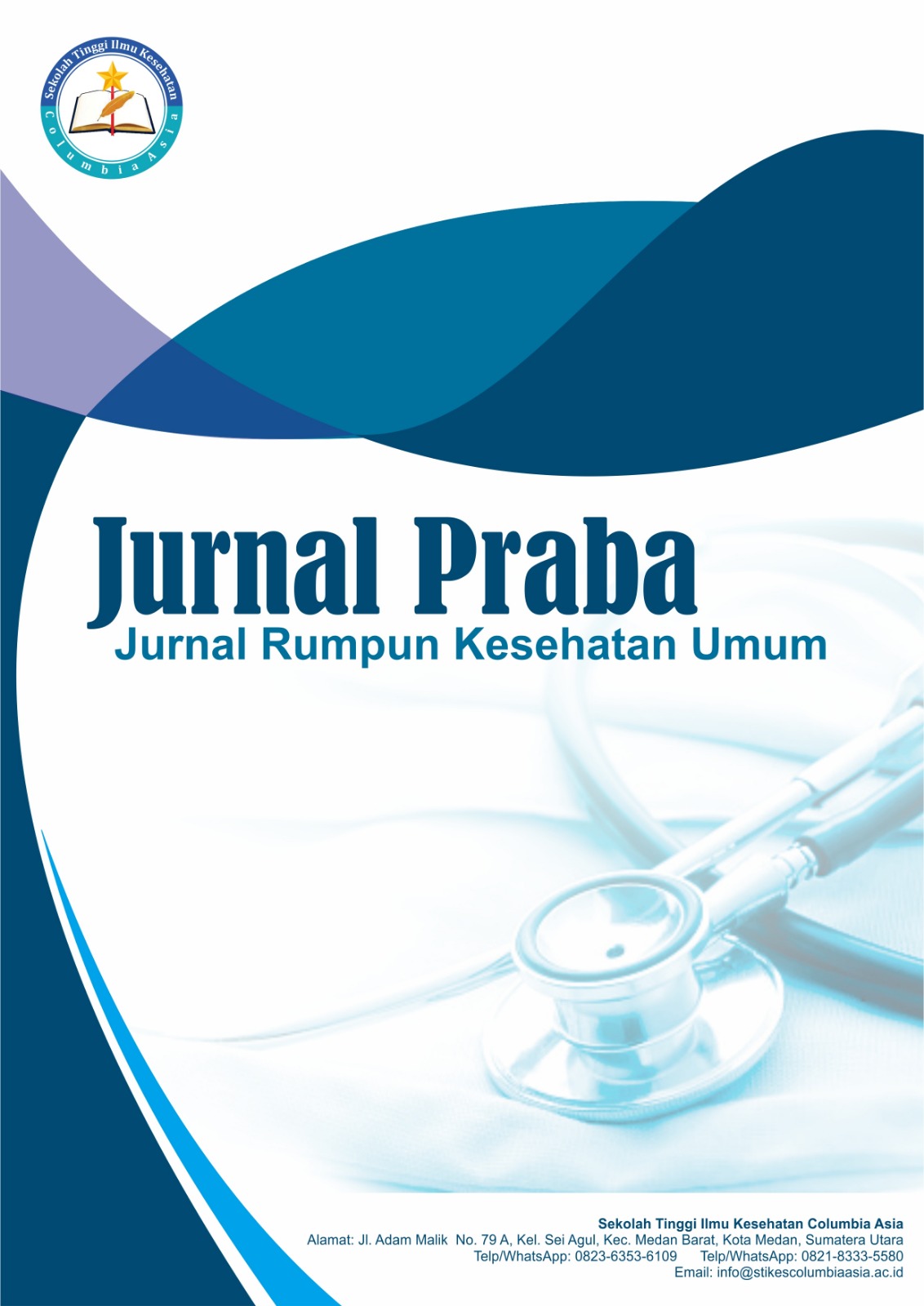Literature Review: Efektivitas Program K3 Dalam Meningkatkan Patient Safety Di Rumah Sakit
DOI:
https://doi.org/10.62027/praba.v3i1.497Keywords:
hospital safety, occupational health and safety, patient outcomes, patient safetyAbstract
This study aims to systematically review the effectiveness of occupational health and safety (OHS) programs in improving patient safety in hospitals. The background of this study highlights the importance of occupational safety as an integral part of healthcare quality, where failures in OHS management may not only affect healthcare workers but also directly impact patient outcomes. The method used was a systematic literature review guided by the PRISMA approach, covering articles published between 2020 and 2025. A total of 28 articles were analyzed after a rigorous screening process from 412 initial records across multiple databases. The findings reveal that OHS programs contribute to patient safety through structured training and education, transparent risk management and incident reporting systems, and the establishment of a strong safety culture. These efforts have been shown to reduce adverse events, hospital-acquired infections, and medical errors. The implications of this review highlight that strengthening OHS programs should be considered a strategic component in hospital management to achieve sustainable improvements in patient safety and quality of care.
References
Cooper, M. D. (2019). Improving safety culture: A practical guide. Journal of Safety Research, 71(1), 205–212. https://doi.org/10.1016/j.jsr.2019.09.004
Kurniawan, A., Sari, D., & Putri, M. (2022). The role of occupational health and safety programs in improving hospital patient safety. International Journal of Public Health Science, 11(2), 345–353. https://doi.org/10.11591/ijphs.v11i2.21544
Lee, J., Park, S., & Kim, H. (2023). Linking occupational safety programs to patient safety outcomes: A systematic review. Safety Science, 165, 106241. https://doi.org/10.1016/j.ssci.2023.106241
Moher, D., Liberati, A., Tetzlaff, J., Altman, D. G., & The PRISMA Group. (2020). Preferred reporting items for systematic reviews and meta-analyses: The PRISMA statement. PLoS Medicine, 6(7), e1000097. https://doi.org/10.1371/journal.pmed.1000097
Rahmawati, N., & Dewi, A. (2022). Implementasi K3 di rumah sakit dan dampaknya terhadap keselamatan pasien. Jurnal Administrasi Kesehatan Indonesia, 10(3), 212–220. https://doi.org/10.20473/jaki.v10i3.2022
Smith, J., & Johnson, R. (2021). Occupational health and patient safety: A systematic review. Journal of Safety Research, 78, 45–56. https://doi.org/10.1016/j.jsr.2021.02.003
Suryani, T., & Putra, H. (2023). Occupational safety culture in Indonesian hospitals: Challenges and opportunities. Asian Journal of Occupational Health, 5(1), 15–27. https://doi.org/10.11591/ajoh.v5i1.2023
Wulandari, R., & Santoso, B. (2021). Occupational health and safety management in hospitals: An Indonesian perspective. BMC Health Services Research, 21(1), 1125. https://doi.org/10.1186/s12913-021-07225-x
World Health Organization. (2021). Global patient safety action plan 2021–2030: Towards eliminating avoidable harm in health care. Geneva: WHO Press.
Alzahrani, F., & Kyratsis, Y. (2020). Safety culture in healthcare organizations: A systematic review of literature. International Journal for Quality in Health Care, 32(5), 325–333. https://doi.org/10.1093/intqhc/mzaa046
Carayon, P., & Hoonakker, P. (2020). Human factors and ergonomics in health care and patient safety. BMJ Quality & Safety, 29(1), 1–3. https://doi.org/10.1136/bmjqs-2019-010901
Gurses, A. P., & Kim, G. (2021). The impact of teamwork and communication on patient safety: A review. BMJ Open Quality, 10(2), e001123. https://doi.org/10.1136/bmjoq-2020-001123
Jeffs, L., Berta, W., Lingard, L., & Baker, R. (2020). Learning from near misses: From quick fixes to closing off the Swiss cheese holes. BMJ Open Quality, 9(1), e000880. https://doi.org/10.1136/bmjoq-2019-000880
Khoshakhlagh, A. H., & Moradi, F. (2022). Safety climate and patient safety: A cross-sectional study in teaching hospitals. International Journal of Occupational Safety and Ergonomics, 28(3), 1873–1881. https://doi.org/10.1080/10803548.2020.1868634
Lee, S. H., Choi, J., & Lee, Y. J. (2024). The effectiveness of occupational health interventions in healthcare: A systematic review. International Journal of Environmental Research and Public Health, 21(4), 1356. https://doi.org/10.3390/ijerph21041356
Mulyani, D., & Handayani, S. (2023). Evaluasi penerapan K3 dalam akreditasi rumah sakit di Indonesia. Jurnal Kesehatan Masyarakat Nasional, 18(2), 89–97. https://doi.org/10.21109/kesmas.v18i2.2023
Nugroho, A., & Puspitasari, R. (2022). Pengaruh implementasi program K3 terhadap kepuasan pasien di rumah sakit tipe B. Jurnal Manajemen Pelayanan Kesehatan, 25(1), 33–42. https://doi.org/10.21460/jmpk.2022.25.1
Patel, K., & Thomas, P. (2021). Infection control and patient safety: Lessons from COVID-19. American Journal of Infection Control, 49(7), 882–889. https://doi.org/10.1016/j.ajic.2021.01.020
Simamora, R. H., & Sitohang, L. (2023). The relationship between occupational safety and patient safety incidents in Indonesian hospitals. Indonesian Journal of Health Administration, 11(1), 55–64. https://doi.org/10.20473/ijha.v11i1.2023
Zhang, Y., Li, J., & Wang, P. (2020). Hospital safety climate and adverse patient outcomes: A systematic review and meta-analysis. International Journal of Nursing Studies, 104, 103512. https://doi.org/10.1016/j.ijnurstu.2020.103512
Downloads
Published
How to Cite
Issue
Section
License
Copyright (c) 2025 Jurnal Praba : Jurnal Rumpun Kesehatan Umum

This work is licensed under a Creative Commons Attribution-ShareAlike 4.0 International License.







